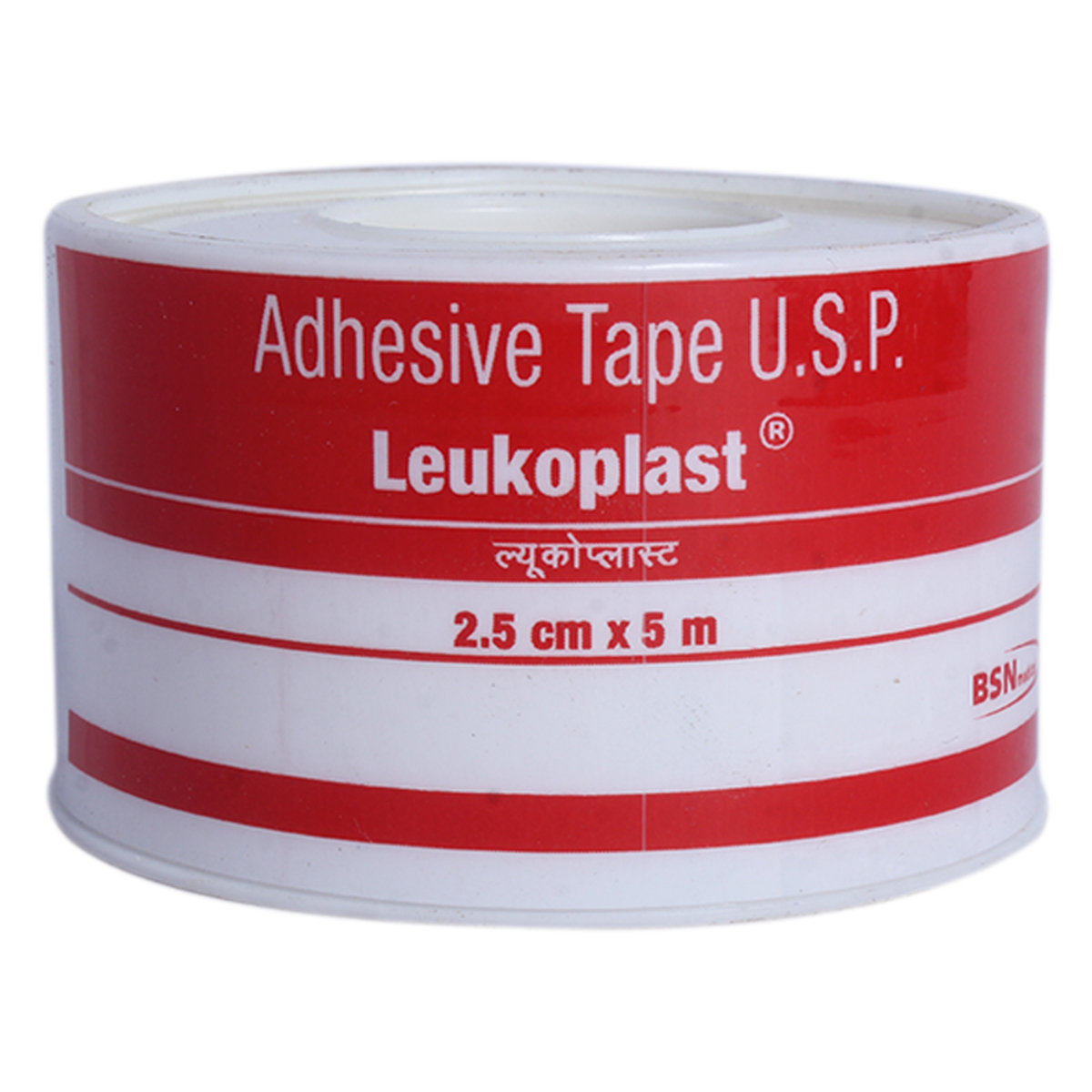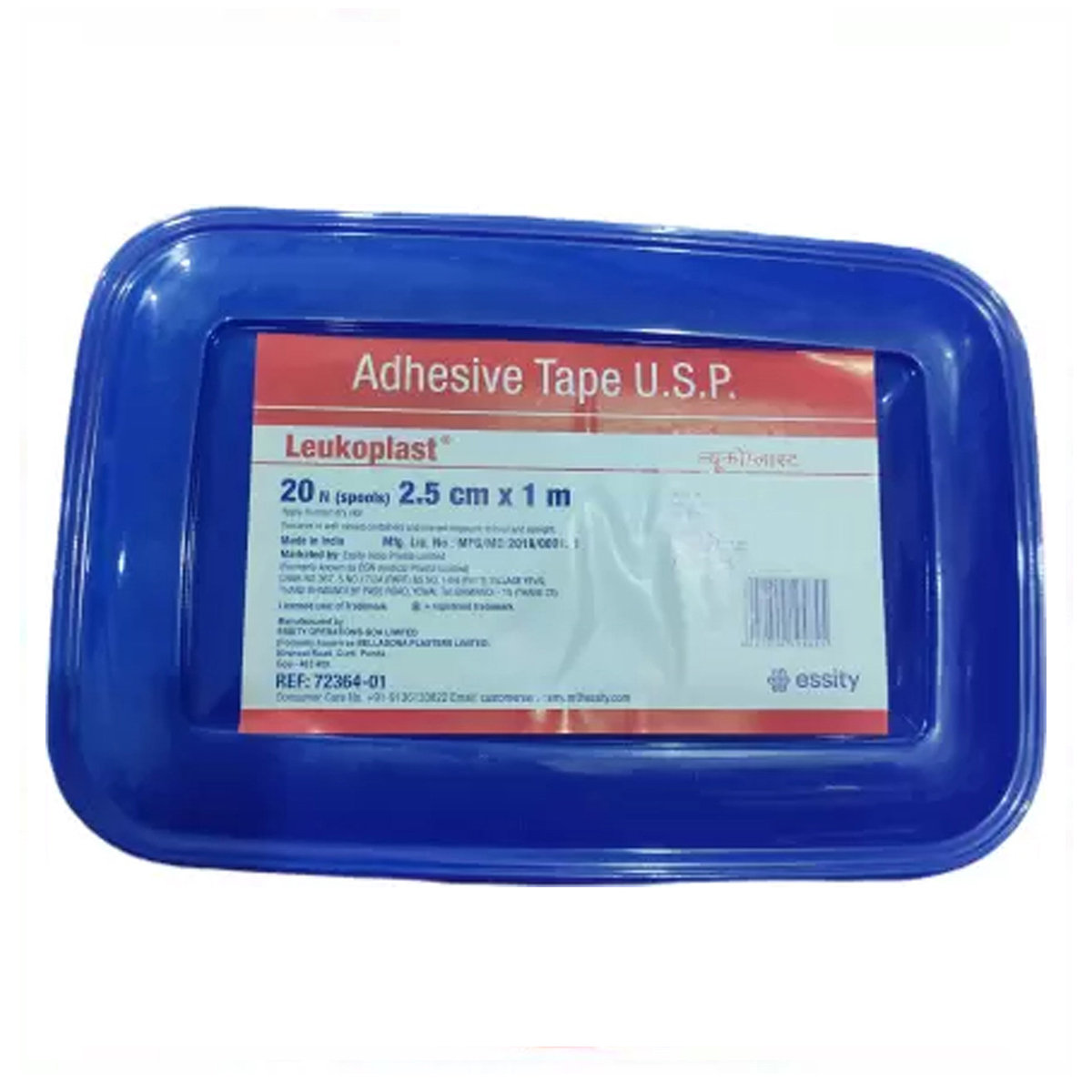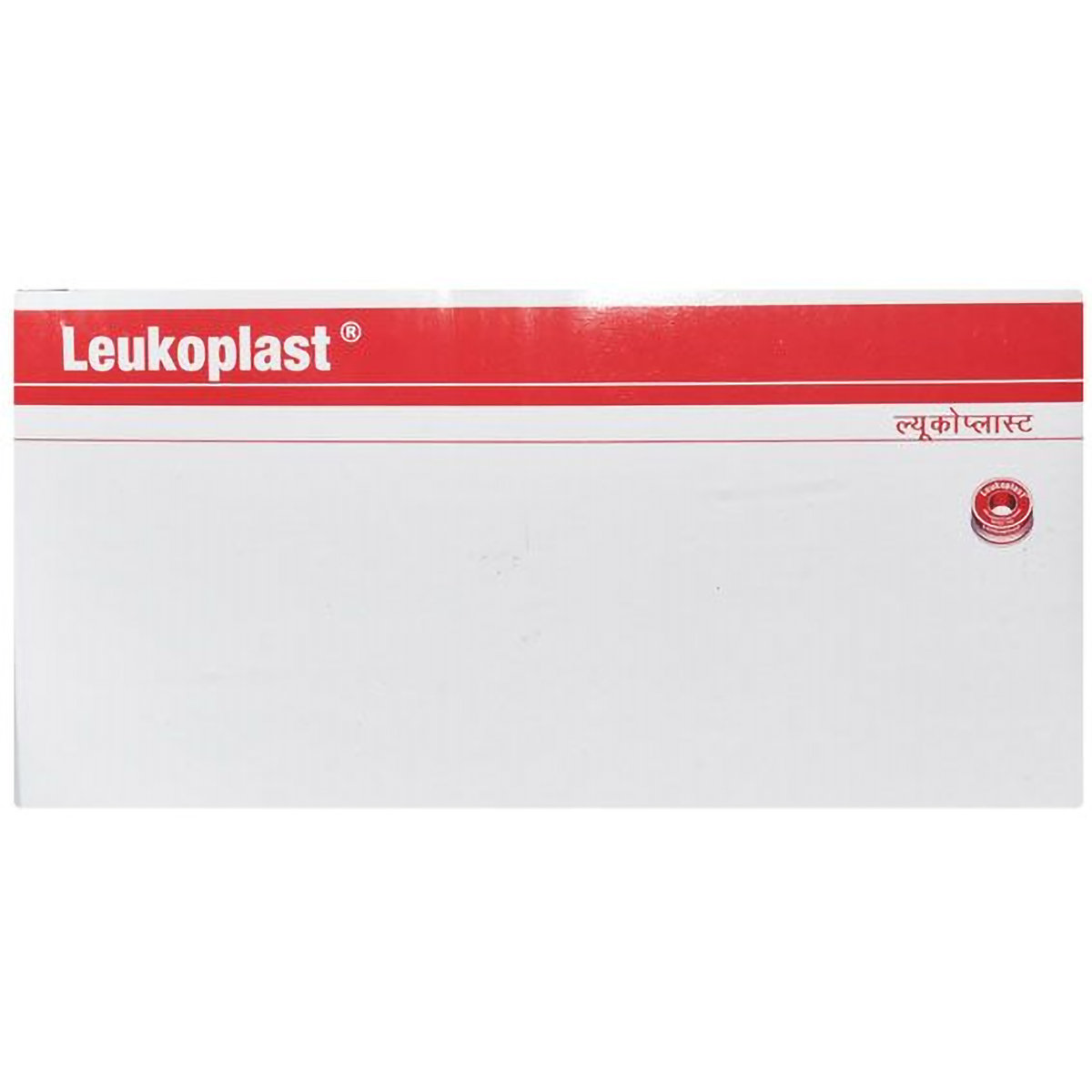Leukoplast Tape, 5cm X 5m, 1 Count
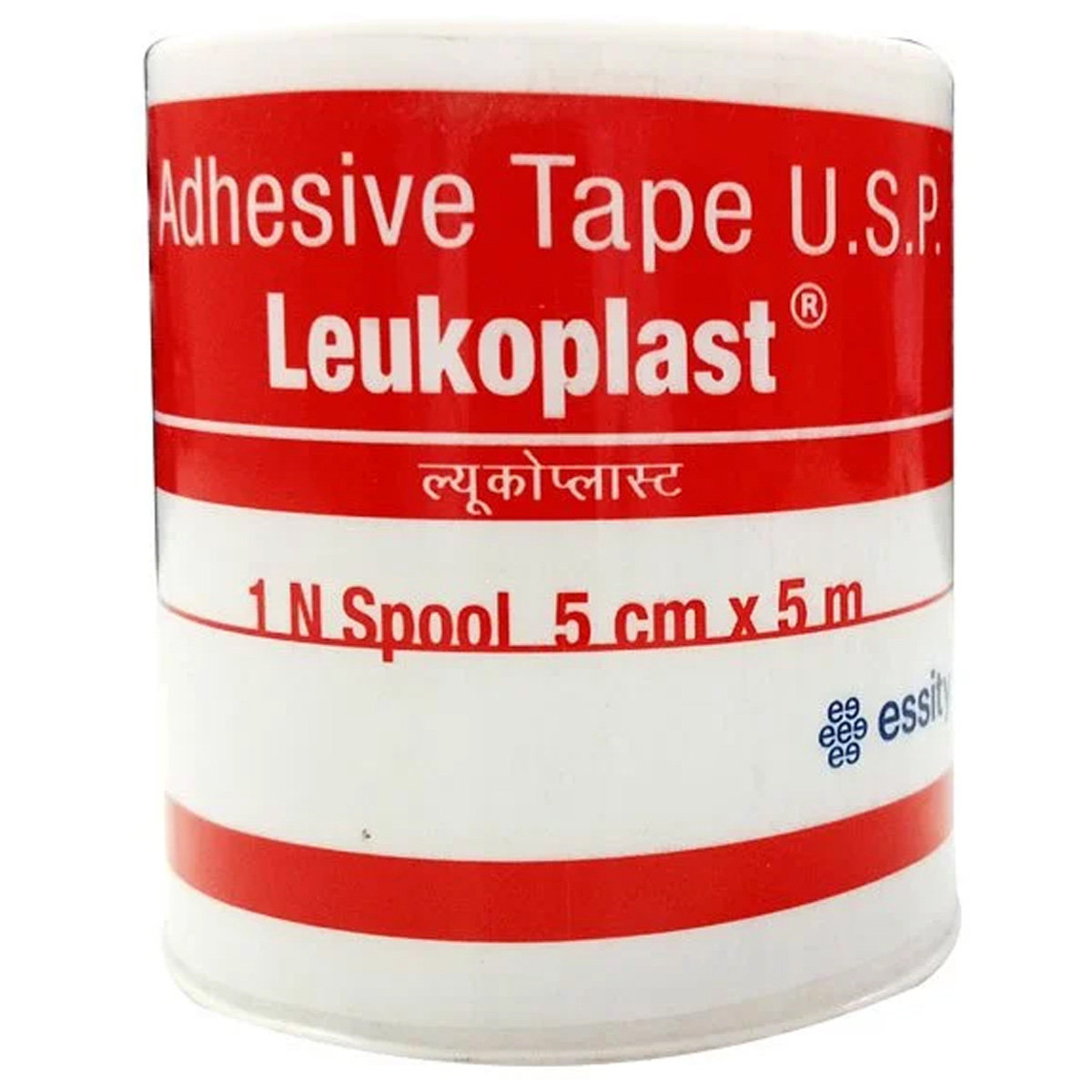
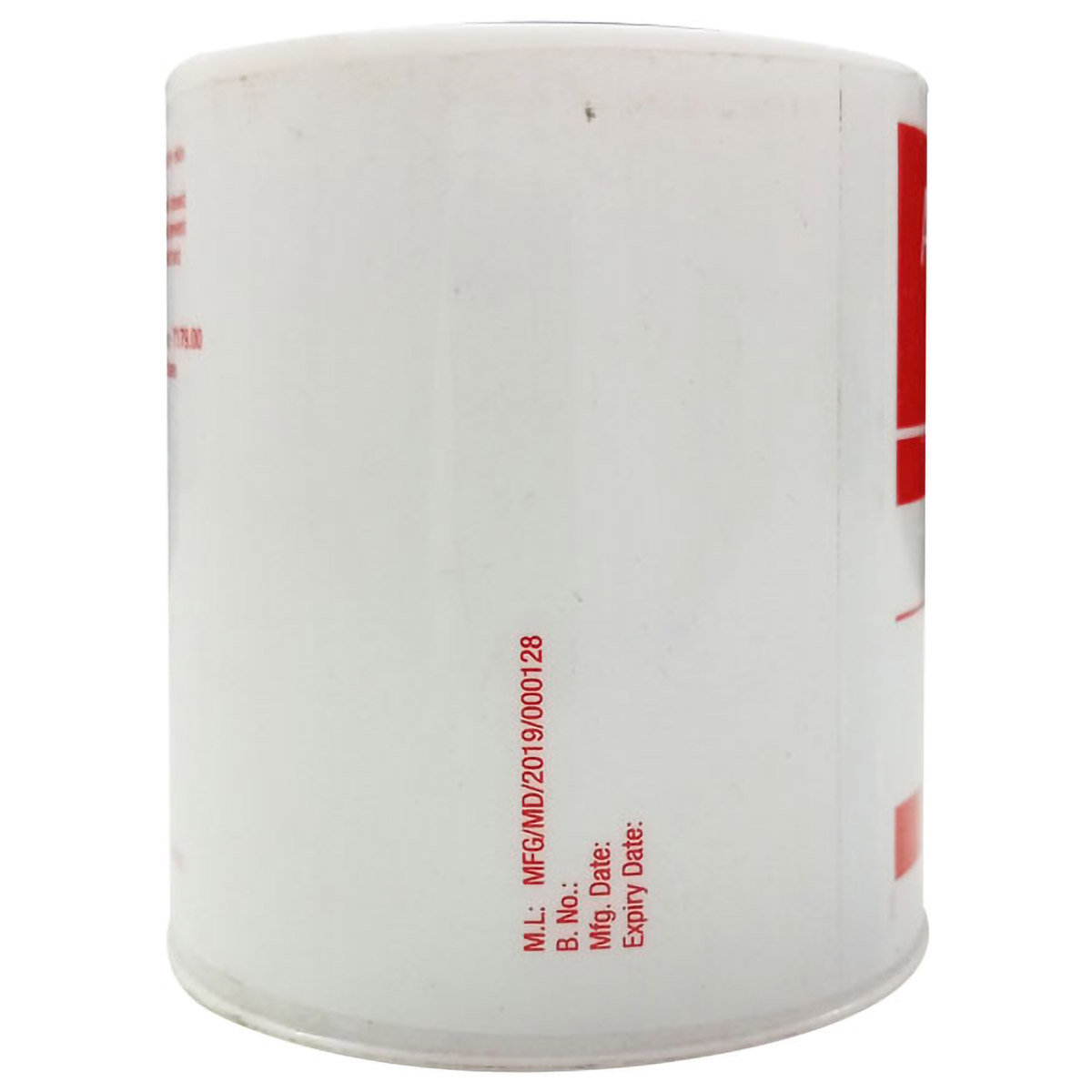
Selected Pack Size:1
1 ₹243
(₹243 per unit)
In Stock
MRP ₹243
(Inclusive of all Taxes)
₹7.3 Cashback (3%)
Know Your Delivery Time
Provide Delivery Location

Secure Payment

India's Most Trusted Pharmacy

Genuine Products
Description
The Leukoplast Tape, measuring 5cm x 5m, is a universal adhesive tape developed by BN Medicals. Its primary use is to securely fix wound dressings and its quality and reliability are evident in both everyday situations and critical care environments. The Leukoplast bandage is formulated with a zinc oxide-based adhesive that ensures a strong initial and permanent adhesion. It's designed on a roll for convenient dispensing and adheres very securely and reliably. Its ability to resist tension makes it quite durable.
Additionally, the Leukoplast tape is also treated specially to repel dirt and moisture, reducing the risk of skin maceration. It's thin, smooth, plastic film easily moulds to body contours making it ideal for securing tubes, catheters, probes and cannulae as well. This Leukoplast tape price reflects its high-quality materials and thoughtful design. With its various uses and benefits, it's an essential addition to any first-aid kit.
Features
- Designed for easy dispensing on a roll
- Water repellent
- Highly elastic viscose backing material
- Zinc oxide based adhesive for high adhesion
- Can be used on any part of skin

Have a query?
Directions for Use
- Before applying the Leukoplast tape, ensure the skin is clean and dry.
- Cut a suitable length from the roll and carefully apply to the area, ensuring all edges are firmly adhered to the skin.
- The tape can be removed and repositioned easily, without losing its adhesive strengths.
- When its use is over, then remove the tape gently to avoid tearing of skin.
Key Benefits
- Reliable Wound Dressing: The Leukoplast tape uses materials that offer steadfast and secure fixation of wound dressings. The reliable stickiness of its universal adhesive tape, ensures dressings stay in place, promoting efficient healing.
- Versatile Use: This universal adhesive tape is not only beneficial for wound dressing but also for securing tubes, catheters, probes, and cannulae. Its adaptability makes it handy in both everyday situations and critical care environments. Additionally, it is radio-transparent which makes it useful for rapid x-ray procedures as well.
- Increased Durability: With its high-quality viscose backing material, this Leukoplast bandage is extremely resistant to tension. This means it's durable and designed to last, providing you with continued support as your wound heals. Additionally, its high quality adhesive ensures that it can be removed and repositioned without losing its adhesive capabilities.
- Comfortable Fit: The Leukoplast bandage is a smooth, thin plastic film that easily moulds to body contours. This provides a comfortable fit while also ensuring optimal wound coverage and relief.
- Breathability and Protection: The special surface treatment of the Leukoplast tape repels dirt and moisture. Not only does this keep your wound clean, but it also provides a breathable area that reduces the risk of skin maceration. Made with high quality materials, it protects the skin from stripping and tearing, when removed.
Safety Information
Store in a cool, dry place, away from direct sunlight and heat. Keep out of reach of children. Keep in a closed container when not in use to prevent dust and dirt accumulation. Discontinue use and seek medical attention if irritation or allergic reaction occurs. Do not apply directly to an open wound. Follow the advice of a doctor on how long a piece of tape can be retained on the wound. Dispose of medical waste in a responsible manner.
FAQs
Leukoplast tape is very versatile. It is used for the fixation of wound dressings, tubes, catheters, probes and cannulae on the skin.
Yes, Leukoplast tape has a special surface treatment that repels water, making it water-resistant. It is also resistant to dirt accumulation.
The frequency of changing your Leukoplast bandage depends on the condition of your wound. Always seek advice from a doctor regarding this.
While Leukoplast tape uses material and ingredients that are generally safe for all skin types, those with particularly sensitive skin should seek advice from a doctor before use.
Country of origin
Manufacturer/Marketer address
Customers Also Bought
Alternatives
Similar Products
Disclaimer
Buy best Health Devices products by
Others
VISSCO
Tynor
FLAMINGO
DOCTOR S CHOICE
ROMSONS
DYNAMIC
MGRM
DYNA
ACURA
ACCUSURE
APOLLO PHARMACY
STAR
BEURER
Hansaplast
RENEWA
Neolife
LP
DR. MOREPEN
Omron
ONETOUCH
ACCU-CHEK
NIRVANA
SURGICARE
BD
TOP
CIPLA
APOLLO LIFE
BSN
EQUINOX
DR. TRUST
VARICOMED
MEDIGRIP
BPL
LEEFORD
ADONIS
Acturaa
Contour Plus
Kanam
SAMSON
BEATO
C-MED
PORTEX
AYUR
CONTROL D
DR. ODIN
DR. SAYANI S
Hicks
LATEX
3M
AMBICA
CUTICELL
DIAMOND
EASYCARE
MEDTECH
VINJOH
FreeStyle
GLOVEON
LEUKOPLAST
MEDICA
POLYMED
i-know
CURAPORE
DATT
LUPIN
MANKIND
MUN HEALTH
NORMA
PHILIPS
SEGO
Swiss Criticure
VASOFIX
VIAGGI
AKTIVE
APOLLO
GLUCOCARD
JELONET
MEDICUBE
MEDISOFT
MEDLINE
MICROPORE
Mypurmist
NAULAKHA
NULIFE
Skyline
VICRYL
VOGMASK
BACTIGRAS
BLOOD
COLOPLAST
COVIFIND
CUTISORB
DETTOL
DISPO VAN
ENCORE
Easylife
FRESINUS
GODREJ
GYPSONA
HALEMED
Vissco Rehabilitation Aids Pvt Ltd
Tynor Orthotics Pvt Ltd
Dynamic Techno Medicals
Ascent Meditech Ltd
Medsmart
Romsons Scientific & Surgical Pvt Ltd
MGRM Medicare Pvt Ltd
ACURA CARE PHARMACEUTICALS
Microgene Diagnostic Systems (P) Ltd
STAR ENTERPRISES
Dr Sayani's Health Care Pvt Ltd
Beurer Healthcare Llp
Beiersdorf (india) Pvt Ltd
AADHAR MEDICARE PVT LTD
Bsn Medical Pvt Ltd
Lp Support India
Kanam Latex Industries Pvt Ltd
Morepen Laboratories Ltd
Becton Dickinson India Pvt Ltd
Nirvana India Pvt Ltd
APOLLO HEALTHCO LIMITED
LIFESCAN MEDICAL DEVICES INDIA PVT LTD
Omron Healthcare India Pvt Ltd
Roche Diagnostics India Pvt Ltd
Adonis Laboratories Pvt Ltd
Equinox Overseas Pvt Ltd
R M Swellcure Therapies Pvt Ltd
Smith & Nephew Healthcare Pvt Ltd
VARIMED MEDIKAL SAN
Apollo Healthco Limited
CIPLA PHARMA LIFESCIENCES LTD.
Precision Coatings Pvt Ltd
Smiths Medical
Ambica Pharma
DYNA TECHNO MEDICAL PVT LTD
Ascensia Diabetes Care India Pvt Ltd
Intellio Healthcare Pvt Ltd
Leeford Health Care Ltd
Mun Health Product India Pvt Ltd
SAMSON SCIENTIFICS & SURGICALS
Siddivinayak Enterprises
B Braun Melsungen AG
CHALLA PHARMA AND SURGICALS
HEALTH ARX TECHNOLOGIES PVT LTD
Johnson & Johnson Pvt Ltd
NURECA LIMITED, INDIA
R . K . COMPANY
RAINBOW HEALTH AND FOOT CARE INDUSTRIES
ACTURAA INDIA PVT LTD
Haiden Technology Pvt Ltd
Hicks Thermoetek India Ltd
Mankind Pharma Pvt Ltd
Threpsi Solutions Pvt Ltd
ABBOTT HEALTHCARE PVT LTD
ANSELL HEALTHCARE PRODUCT LLC
DR.ODIN HOME HEALTHCARE DEVICES
Easycare Medical Products Co Ltd
MEDITECH PHARMA
MICRO RUBBER INDUSTRIES PVT LTD.
Piramal Enterprises Ltd
Poly Medicure Ltd
REGENXGEN BIOSOLUTIONS PRIVATE LIMITED
TELEFLEX MEDICAL PRIVATE LIMITED
THEA TEX HEALTHCARE INDIA PVT LTD
Vinjoh Healthcare Pvt Ltd
XTRACARE PRODUCTS PVT. LTD
DR GROVER EYE HOSPITAL PVT LTD
Jeevansri Health Product
Lupin Ltd
NORMA D N D PRODUCTS PVT LTD
OPTIMA MEDITECH PVT. LTD.
Top Corporation
Cipla Ltd
DATT MEDIPRODUCTS LTD
Glowria Inc
Goldwin Medicare Ltd
Medicare Hygiene Ltd
Neptune Lifesciences
Swiss Criticure
3M India Ltd
ACME PHARMACEUTICALS PVT LTD
Arkray Healthcare Pvt Ltd
Cipla Health Ltd
Coloplast Corporation
Datt Mediproducts Pvt Ltd
Hollister Incorporated
MOREPEN LABORATORIES LTD.
Philips India Ltd
SAFE LIFE SCIENCES PHARMACEUTICALS
Seasons Healthcare Ltd
Surgiwear
TOTAL ORTHO CARE
Viggo Medical Device India Pvt Ltd
ZENERIS PHARMA PVT LTD
Abbott India Ltd
Acs Pharmaceuticals
CONCEPTRENEUR VENTURE PVT. LTD.
Entero Healthcare Solution Pvt Ltd
Godrej Consumer Products Ltd
Haledew Remedies
HOSPITAL SUPPLIES
Stockings
Knee Cap
Gloves
Knee Support
Bandage
Cervical Collar
Anti Virus FaceMask
BP Monitor
Dressing
Elbow Support
Lumbar Belt
Test Strips
Knee Brace
Ankle Support
Arm Sling
Walking Aid
Abdominal Belt
Adhesive Tape
Ankle Binder
Glucometer
Back Support
Wrist Splint
Abdominal Support
Wrist Brace
Insoles
Knee Immobiliser
Shoulder Immobilizer
Finger Splint
Nebulizer
Thermometer
Weighing Machine
Lumbar Support
Neck Pillow
Rib Belt
Back Brace
Dressing Gauze
Leg Support
Pulse Oximeter
Ankle Brace
Abdominal Binder
Hernia Belt
Knee Wrap
Lancets
Wrist Support
Heel Cushion
Hot & Cold Gel Pack
Hot Water Bag
Shoulder Support
Commode
Diabetic Footwear
Heating Pad
Oxygen Mask
Clavical Brace
Pregnancy Kit
Ankle Warp
Chest Binder
Heating Belt
BODY MASSAGER
Travel Pillow
Exercise Band
Scrotal Support
Wrist Wrap
Elbow Brace
Lumbar Corset
Pelvic Binder
Socks
Soft Tape
Vaporizer
Walker Boot
Abdominal Corset
Arm Supports
Catheter
Exercise Ball
Posture Support
Arm Splint
Plaster
Stethoscope
Cervical Support
Gauze Swab
Heel Cup
Seat Cushion
Surgical Tape
Wheel Chair
Cool Pack
Face Shield
Inhaler
PPE Kit
Thigh Support
Wrist Binder
Bandage Strips
Cotton
Exerciser
Gym Ball
Oxygen Can
Steamer
Clavical Support
Covid Test Kit
Finger Cot
Humidifier




